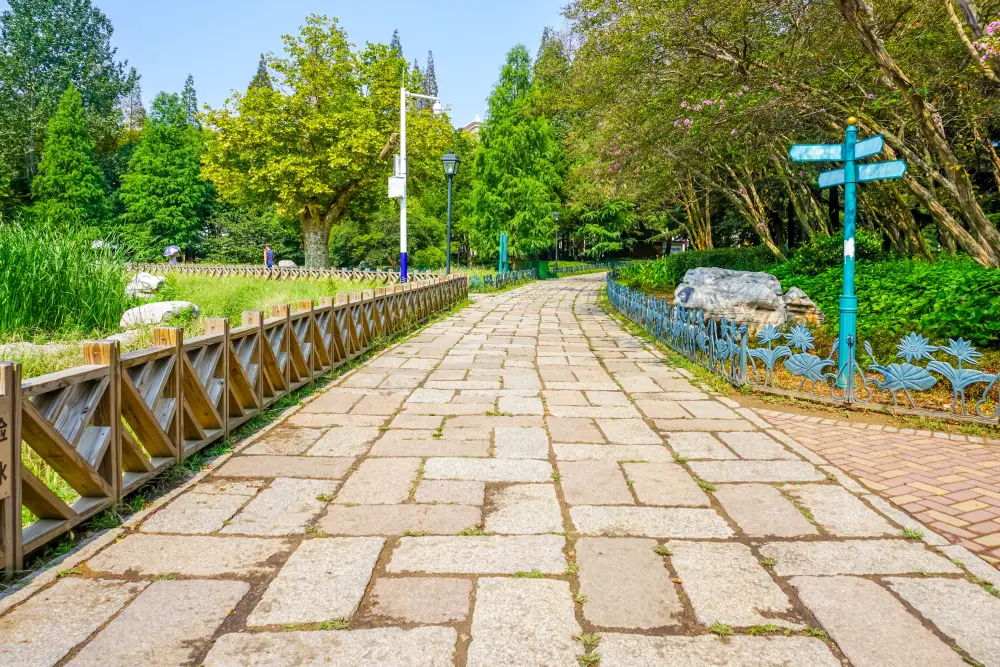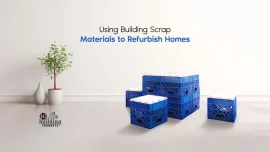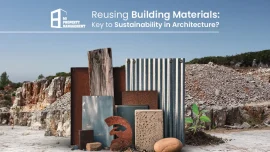
Increasing Importance of Unipavers in Sustainable Construction
In the last few years, there has been a boom in green building materials as the construction industry finds out about the green ideology. Amongst all such green options, unipavers have been the core key driver to the embracing of sustainable construction. Unipavers, which were originally used to pave walkways, driveways, and open space, are revolutionizing how urban infrastructure is being constructed.
What Are Unipavers?
Unipavers, or interlocking pavers, or concrete block pavers, are precast modular pavement units resembling puzzle pieces. They are produced predominantly by employing a mixture of aggregates, cement, and sand. Unipavers come in an extensive range of shapes, sizes, and colors. They find widespread application in road construction, pavements, patios, parking lots, and landscape walks.
Unpavers differ from concrete or asphalt slabs because they are not embedded in the ground. This gives them a performance and environmental benefit over the others and makes them the best option for green building construction.
Why Unipavers Matter in Sustainable Construction
Sustainable building is merely reducing the environmental footprint of buildings and infrastructure and optimizing energy and material efficiency. Unipavers aid in this process in the following ways:
- Groundwater Recharge and Permeability
Permeability is the most important environmental benefit of unipavers. Regular concrete surfaces generate runoff, and rainwater does not have access to penetrate the soil. This results in urban flooding and reduces the groundwater level.
Unipavers, especially when installed with permeable jointing material and appropriate sub-base material, allow rainwater to percolate through joints between pavers. This promotes recharging of groundwater, reduces loads on stormwater drainage systems, and reduces the risk of flooding.
- Reusability and Minimized Waste
Compared to asphalt or cast concrete, which get torn up for repair or replacement, unipavers are easy to pick up, replace, or even recycle with minimal or no wastage. Such modularity is precisely what green construction ideals approve of, reduction of material wastage being a key consideration.
At their later age, unipavers can also be recycled and crushed and utilized as aggregate in newly constructed structures to ensure a circular economy.
- Minimized Urban Heat Island Effect
Urban areas with extensive surfaces of concrete and asphalt like to retain and absorb heat, which accounts for the Urban Heat Island (UHI) phenomenon. Unipavers have reduced heat absorption and enhanced surface cooling compared to traditional pavers, especially lighter or reflective unipavers.
Employment of unipavers in city planning reduces the surface temperature, leading to a more comfortable microclimate and reduced air conditioning demands in the neighborhood.
- Energy Efficiency in Production
Unipaver production itself is more energy-efficient than the production of the original concrete slab or asphalt. Because most plants today move toward green processes—e.g., fly ash or recycled aggregates—the unipaver is increasingly a greener product for green building.
In addition, because unipavers are mostly produced locally in most regions, carbon footprints from transportation are also minimized.
- Load Resistance and Durability
Longevity is also included in sustainability. Unipavers have excellent wear-and-tear resistance and an exceptionally high durability. They never crack despite being exposed to heavy traffic, and they are ideal for use on roads, parking areas, and industrial areas.
Their longer life cycle reduces the frequency of repairs and replacement, saving resources and reducing long-term maintenance costs—a central part of sustainability.
Applications of Unipavers in Sustainable Projects
Because of their versatility and environmental value, unipavers are being used in a variety of green building projects, including:
- Green infrastructure projects like eco-parks, green corridors, and rain gardens.
- LEED-certified buildings where permeable paving assists in achieving credits for sustainable site development.
- Smart city projects where pedestrian-friendly and flood-resistant infrastructure is the focus.
- Residential and commercial settings where green design is the priority.
Innovations in Unipaver Technology
Technology in recent years has also made unipavers sustainable. They include:
Photocatalytic pavers: These contain titanium dioxide that breaks down air pollution, purifying the air.
Grass pavers: Made to allow grass to grow through the pavers, benefiting from the strength of concrete and the cooling properties of vegetation.
Solar pavers: Integrated with solar cells, these pavers generate clean energy in addition to a paving system.
These technologies are creating new potential for what is possible to do with Unipavers in sustainable construction.
As the world battles global warming, urbanizing at runaway levels, and resources dwindle, the transition to sustainable building is no longer a choice—it is a necessity. As green and sustainable, beautiful and functional as Unipavers are, they have emerged as a leading tool in this revolution.
Their application in groundwater management, waste minimization, urban cooling, and long-term sustainability makes them a vital component of any green building project. City planners, builders, and developers who utilize unipavers can pave the way—literally—for a greener, more sustainable future.






